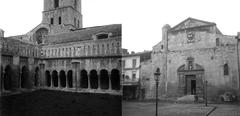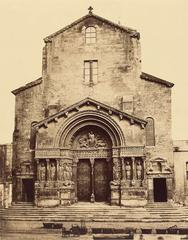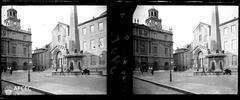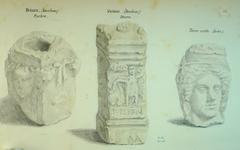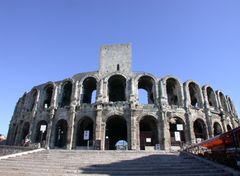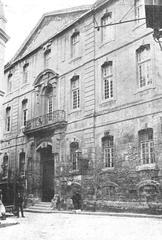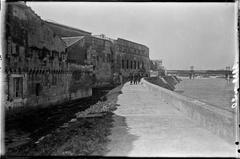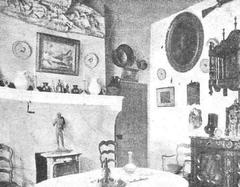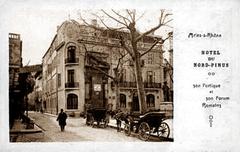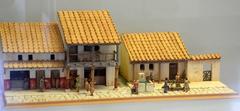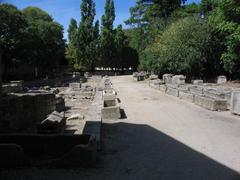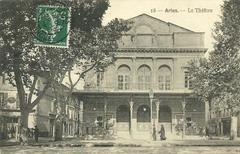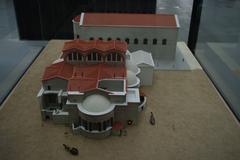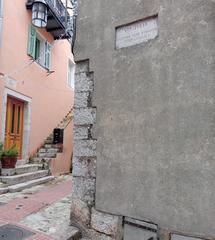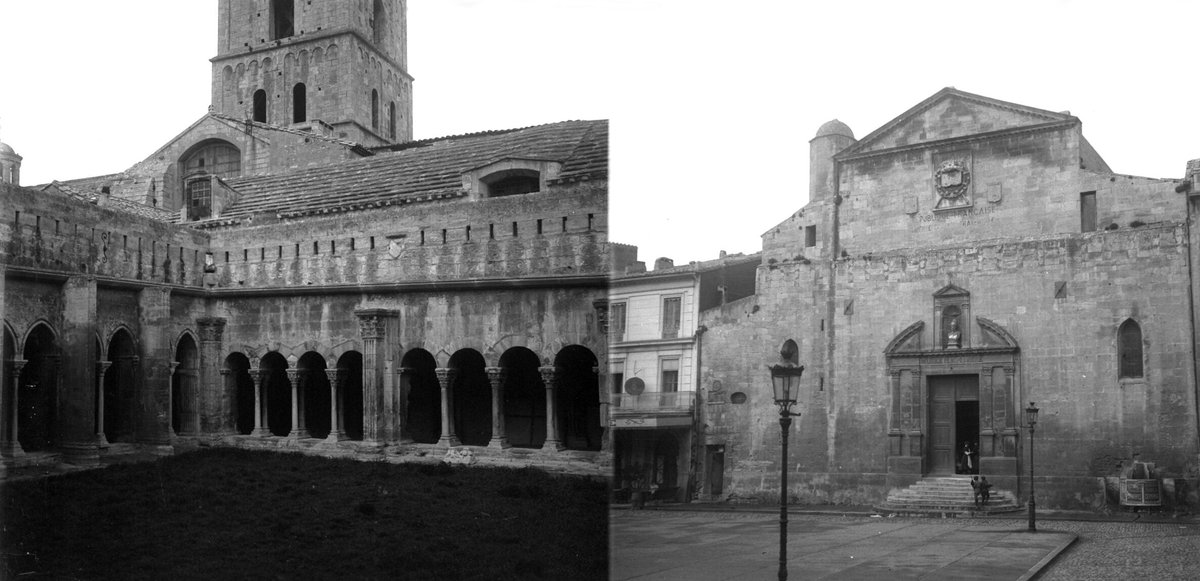
Visiting Cathédrale Saint-Trophime d’Arles: Hours, Tickets, and Tips
Date: 23/07/2024
Introduction
Located in the heart of Arles, France, the Cathédrale Saint-Trophime d’Arles stands as a remarkable testament to the city’s rich historical and cultural tapestry. This architectural marvel, which seamlessly blends Romanesque and Gothic styles, attracts numerous visitors each year who are captivated by its intricate stone carvings, historical significance, and serene cloister. Constructed in the 12th century, the cathedral is named after Saint Trophimus, believed to be the first bishop of Arles, sent by Saint Peter himself (Catholic Encyclopedia). Over the centuries, it has served not only as a religious center but also as a cultural landmark, gaining recognition as a UNESCO World Heritage Site in 1981 (UNESCO). This guide aims to provide comprehensive insights into visiting Cathédrale Saint-Trophime, covering everything from its rich history and architectural significance to practical information like visiting hours and ticket prices. Whether you’re a history buff, an architecture enthusiast, or simply a curious traveler, the Cathédrale Saint-Trophime d’Arles offers a unique glimpse into the medieval heritage of southern France.
Table of Contents
- Introduction
- Early Beginnings and Roman Influence
- Construction and Architectural Style
- The Role of Saint Trophimus
- Gothic Additions and Modifications
- The Cloister of Saint-Trophime
- Historical Significance and UNESCO Recognition
- The Cathedral During the French Revolution
- Restoration Efforts
- Modern-Day Significance
- Visitor Information
- Visiting the Cathedral
- How to Get There
- Frequently Asked Questions
- Conclusion
Early Beginnings and Roman Influence
The Cathédrale Saint-Trophime d’Arles, located in the historic city of Arles in southern France, stands as a testament to the city’s rich history and architectural prowess. The origins of the cathedral date back to the 12th century, although the site itself has been of religious significance since the early Christian era. Arles, once a prominent Roman city, has left an indelible mark on the cathedral’s design and construction. The influence of Roman architecture is evident in the cathedral’s structure, particularly in its use of classical forms and motifs.
Construction and Architectural Style
The construction of Cathédrale Saint-Trophime began in the 12th century, with the primary structure completed by the end of the century. The cathedral is a prime example of Romanesque architecture, characterized by its robust and solid construction, semi-circular arches, and detailed stone carvings. The façade of the cathedral is particularly noteworthy, featuring intricate sculptures that depict scenes from the Last Judgment. These sculptures are considered some of the finest examples of Romanesque art in France.
The Role of Saint Trophimus
The cathedral is named after Saint Trophimus, who is believed to have been the first bishop of Arles. According to tradition, Saint Trophimus was sent to Arles by Saint Peter himself, making him a significant figure in the early Christian history of the region. The relics of Saint Trophimus were housed in the cathedral, further enhancing its religious significance. The presence of these relics made the cathedral an important pilgrimage site during the medieval period.
Gothic Additions and Modifications
In the 14th century, the cathedral underwent significant modifications, incorporating elements of Gothic architecture. The most notable addition from this period is the Gothic choir, which replaced the original Romanesque apse. This blend of Romanesque and Gothic styles gives the cathedral a unique architectural character, reflecting the evolving tastes and influences of different periods.
The Cloister of Saint-Trophime
Adjacent to the cathedral is the Cloister of Saint-Trophime, which was constructed in the 12th and 14th centuries. The cloister is renowned for its beautifully carved capitals and columns, which depict biblical scenes, saints, and fantastical creatures. The cloister served as a place of meditation and prayer for the canons of the cathedral and is considered one of the finest examples of Romanesque sculpture in Provence.
Historical Significance and UNESCO Recognition
The Cathédrale Saint-Trophime d’Arles holds immense historical significance, not only as a religious site but also as a cultural and architectural landmark. In 1981, the cathedral, along with other Roman and Romanesque monuments in Arles, was designated a UNESCO World Heritage Site. This recognition underscores the cathedral’s importance as a masterpiece of medieval architecture and its role in the cultural heritage of the region.
The Cathedral During the French Revolution
The French Revolution brought significant changes to the cathedral. In 1791, the cathedral was secularized, and many of its treasures were confiscated or destroyed. The building itself was repurposed for various secular uses, including as a warehouse. It was not until the 19th century that the cathedral was restored to its former glory and returned to its original religious function.
Restoration Efforts
Throughout the 19th and 20th centuries, extensive restoration efforts were undertaken to preserve the cathedral’s architectural integrity and artistic heritage. These efforts have ensured that the cathedral remains a vibrant and active place of worship, as well as a major tourist attraction. The restoration work has also helped to uncover and preserve many of the original Romanesque and Gothic features that make the cathedral so unique.
Modern-Day Significance
Today, the Cathédrale Saint-Trophime d’Arles continues to be a focal point of religious and cultural life in Arles. It hosts regular religious services, as well as concerts and cultural events. The cathedral’s rich history and stunning architecture attract visitors from around the world, making it a key destination for those interested in medieval art and architecture.
Visitor Information
Opening Hours
The cathedral is open daily from 9 AM to 6 PM. However, hours may vary depending on religious services and special events. It is advisable to check the official website for the most up-to-date information.
Tickets
Admission is free, but donations are appreciated. Guided tours are available for a small fee, providing deeper insights into the cathedral’s history and architecture.
Special Events
The cathedral hosts regular concerts and cultural events. Check the official website for the latest schedule.
Accessibility
The cathedral is wheelchair accessible. Ramps and designated pathways are available to accommodate visitors with limited mobility.
Visiting the Cathedral
For visitors, the Cathédrale Saint-Trophime offers a glimpse into the rich history and artistic heritage of Arles. Guided tours are available to provide deeper insights into its history and architecture. The nearby Cloister of Saint-Trophime is also a must-visit, offering a serene and contemplative space adorned with exquisite sculptures.
How to Get There
Arles is well-connected and can be reached by various modes of transportation. The city has a train station with regular services from major cities like Paris and Marseille. For those driving, Arles is accessible via the A54 motorway. There are also bus services and parking facilities available near the cathedral.
Frequently Asked Questions
- What are the visiting hours for Cathédrale Saint-Trophime d’Arles? The cathedral is open daily from 9 AM to 6 PM.
- How much do tickets cost for Cathédrale Saint-Trophime d’Arles? Admission is free, but guided tours are available for a small fee.
- What are the best nearby attractions to visit? Visitors can explore other historical sites in Arles, such as the Roman Amphitheatre, the Alyscamps necropolis, and the Musée Réattu.
Conclusion
In conclusion, the Cathédrale Saint-Trophime d’Arles offers an unparalleled journey through time, showcasing the rich historical, architectural, and cultural heritage of Arles. Its Romanesque and Gothic elements, coupled with its significant religious history, make it a must-visit destination for anyone exploring the south of France. From the intricate carvings on its façade to the serene atmosphere of the adjacent cloister, every aspect of the cathedral tells a story of faith, art, and resilience. The extensive restoration efforts have ensured that future generations can continue to appreciate this medieval masterpiece. Whether you’re attending a religious service, a cultural event, or simply exploring the historic site, the Cathédrale Saint-Trophime d’Arles promises a memorable and enriching experience. For more detailed information, including the latest visiting hours and special events, visitors are encouraged to check the official website or download the Audiala mobile app for real-time updates.
